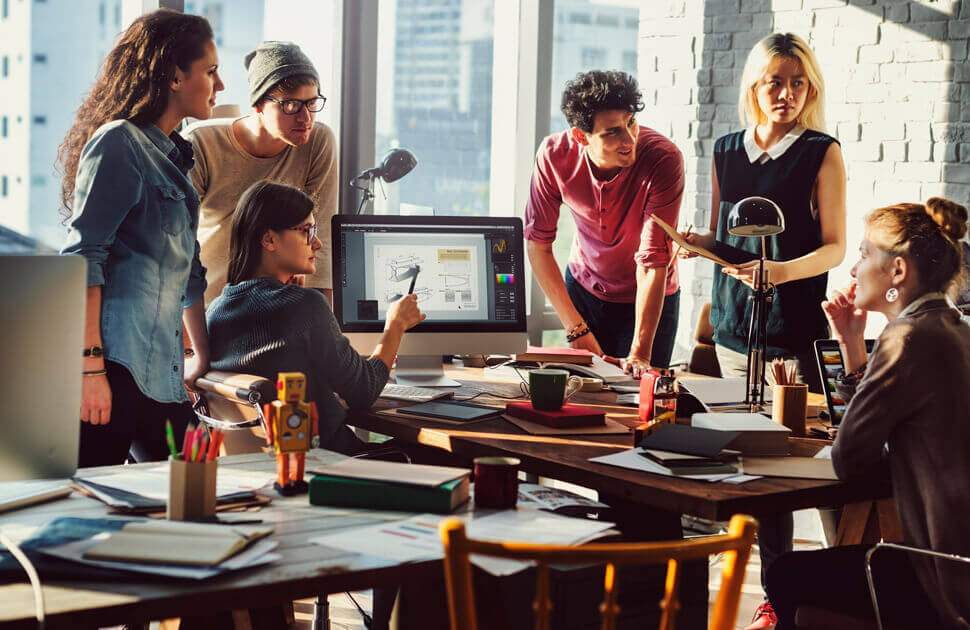Companies can only guarantee that they have adequate space for their equipment if they can anticipate how changing trends will shape the needs of their workplace. Changes in the way people work are already having an impact on how an office space and its design works. Next, we will look at five emerging trends in the workplace of the future:
1.- Work based on activities
In some offices we are already seeing the shift to work based on activities, where the space is designed around specific tasks of the employees and the physical building encourages collaboration or concentration. In addition to multiple different work configurations, such as desks in a row, quiet rooms and soundproof booths, white noise machines are installed at strategic points in open floor areas to increase levels of privacy without the need for physical walls. All this allows people to work in the way that best suits them.
2.- Flexibility
As companies rely more and more on self-employed people, their culture and levels of commitment can suffer if they do not have the right environment and / or means. Everyone, whether permanent or temporary employees, should feel welcome and be part of the team. This means that the space needs to accommodate a variable and flexible workforce in an inclusive manner through, for example, BYOD devices.
Organizations should look for a place that can be adapted to their needs. That is why office plants are designed to ensure they are flexible for all types of customers and that they can be easily adapted as companies grow or contract.
3.- Technology
According to Landsec, the physical space must facilitate that people, machines and technology work together. There is a lot of talk about smart buildings and how companies can make greater use of the Internet of Things.
Smart buildings can improve the impact an organization has on the environment by allowing greater control over lighting, temperature and carbon dioxide levels. In addition, according to a CFO Survey Europe report, the staff is 15% more productive when they have control over their environment.
This means that your personal technology is perfectly compatible with interactive screens in all meeting rooms, as well as being portable and powerful enough to allow you to work flexibly and remotely when necessary.
4.- Health and well-being
The pace of change and technological adoption means that we are moving towards a “always on” work pattern, which results in an increase in stress levels. The rhythm of our lives adds to the pressure because many things affect our mental space at home and at work.
Business leaders and the HR function have a great interest in simplifying work practices and systems to allow their workers to be more effective. The physical environment is not a panacea for reducing stress, but do not underestimate the adverse effect of a stressful workspace on people and, ultimately, on companies. Intuitive buildings can increase morale and have a positive impact on employee productivity.
According to DeskTime, comfortable, well-ventilated and well-lit work places increase job satisfaction by 24%.
5.- Simplicity
Whichever way you look at it, the key to adapting to a constantly changing environment is to make everything as easy as possible.
The right buildings will simplify things for employees to do their job. For example, many new office buildings have facilities that cater to a diverse workforce; even in the way they travel to work or choose to use their breaks for lunch.
Has The End Of The Workspace Reached, As We Know It?
The office, as we know it now, may cease to exist in the not too distant future, but that does not mean that office space is becoming redundant.
There will continue to be a significant demand for areas that can unite companies because staff, independent professionals and other partners must still come together to collaborate, co-create, solve problems and build relationships.
Given that the office buildings we use today are different from those of ten years ago, so will the physical workspaces of the end of 2020 with a different emphasis: they will reflect the key skills of innovative, creative and flexible professionals.
 Subscribe
Subscribe
 Ask for a demo
Ask for a demo

 3 min
3 min
